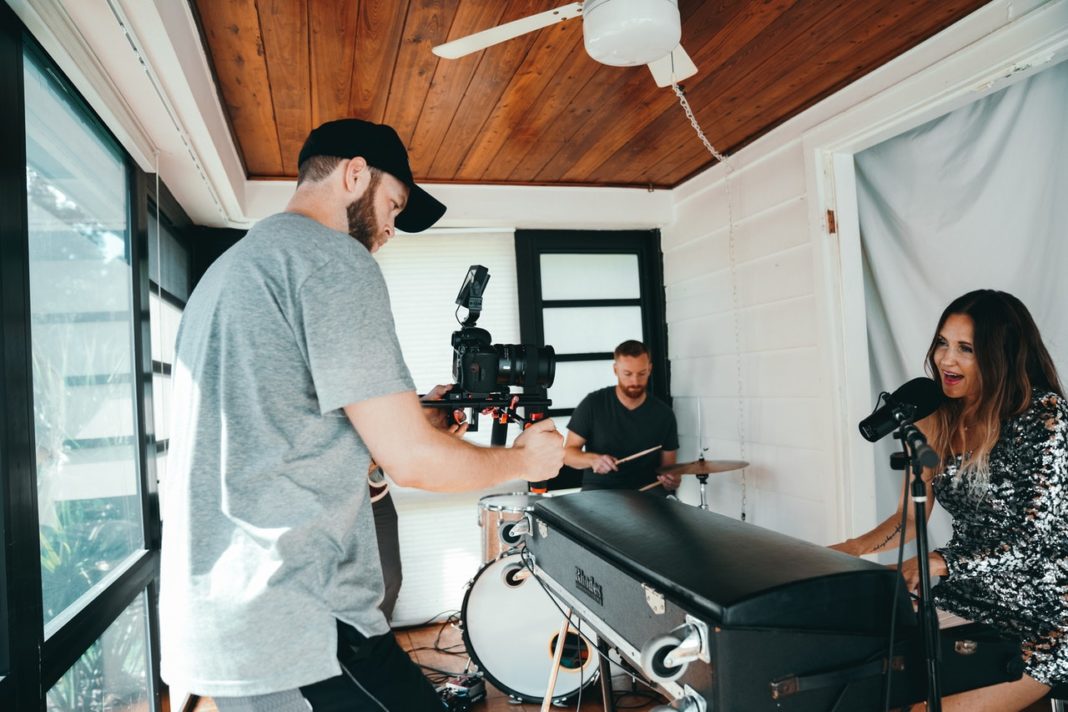Music plays an extremely important role in every video – it evokes emotions and sets the mood for the scene. Music guides viewers into interpreting the scene and feeling what the creators of the video intend the viewers to feel.
The role of music becomes even more potent in business and commercial videos. Businesses want their audience to feel positive and excited when watching their videos and not the opposite because people rarely remember what they see or hear in a video but always remember how the video made them feel. It is, therefore, important that your brand videos always leave the viewer feeling positive and you can achieve this by using the right music for your videos.
In this article, we cover all the important elements of selecting and using music for your videos. If you’ve been wondering how to make a music video, don’t fret, we have you covered.
How Big A Role Does Music Play In Videos?
The weight of music in a video is best elucidated by silent films. If you have ever watched a silent film, you will know that even though the actors use no words, you are able to comprehend how to react to each scene. The reason is the music – you are emoting to the scene based on how you feel when you listen to the music. Here are some important uses of music in a video:
Music evokes emotion
Video adds the visual element – it drives a message and captivates the mind, and music evokes emotion – it tells you how to feel about a scene. Like we said before, people remember how they felt about something more than what they actually saw or heard, and that is why music is an integral component of every video.
Music can send a message
Like in silent films, music can be used to send a message. There are a lot of commercial ads that use no voice-over, just the product video, and music, and these ads work – they drive engagement and conversions. Many Levis commercial ads are just people, denim, and music. The reason these ads work is that the music is enough to send the message they want to deliver.
People remember music
You never hear people say that video was stuck on my mind, but they sure do say that tune has been stuck on my mind all day. If your ad or brand video has music that your audience keeps humming all day, guess what else they remember as they hum the tune? That’s right, your brand. Music is memorable and everything associated with it also becomes memorable.
Music can become a brand element
Some brands create signature tunes that become synonymous with the brand. Nokia, for example, has a signature tune that anyone even today will recognize. So do brands like Paytm and Sony. A tune can be as personal as other brand elements like colors or a logo. People will recognize your brand from the tune and it will represent your brand.
Selecting Music For Your Videos
Decide the video’s mood
The music added will define the video’s mood, and that’s why you should start by deciding what the mood of the video should be. Is it going to be funny, edgy, playful, dramatic, mysterious? Think about the content in your video, the direction it is going in, and the message it has to deliver. This will give you an idea of what mood the video should set. You can then go about selecting music for your video.
Limit the music to one or two styles
Unlike movies or short films, brand or commercial videos are short, usually just a minute or two long. Packing too many emotions through too many music styles within such a short duration is not a good idea. You want your audience to feel positive at the end of the video, not a rollercoaster of emotions that leaves them confused. It’s best to stick to just one style of music for commercial videos, at the max two.
Sync video transitions and the music
The rhythm, tempo, and beats of the music should match the video. A fast-paced video with many quick transitions will go well with an upbeat song. A slow video will go well with a song with a slower tempo. The pace of the music should match the pace of the video. Another great way of making good commercial videos is to sync the audio beats with video transitions.
The music should suit your audience
While the music should be selected to deliver your message, you should also consider your audience when selecting the song. People of certain geographies, a certain ethnicity, certain ages, etc., are accustomed to listening to certain genres of music. They relate to certain styles. Very few members of the Gen Z population will relate to an older music style like Jazz, for example. It’s good to select music that fits the genre of your audience’s taste.
Be careful about copyright issues
Lastly, use music that you’re allowed to use. Music is bound by strict copyright laws and unless you are composing something original for your video, you may want to check who owns the rights to the song you are using and if they are willing to license it to you. If you want to know how to make a music video with free music, you can just use YouTube’s royalty-free music in your videos. They have a great selection of tunes that are divided by genre and mood so it makes it easy for you to select as well.
Conclusion
Good audio is as important as good video. Music will help you deliver the right message by setting the right emotion for your video. You won’t have to worry about evoking the right feelings through text, voice, or acting because music can do that for you. You can focus on delivering your message and creating an entertaining video while the music supplements it by evoking the right emotions.












